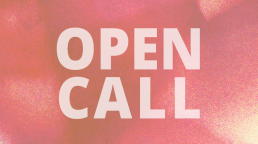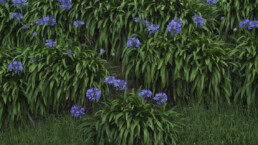FUSO 2023 – 22 a 27 de Agosto
26 Agosto, 22h00
Castelo de São Jorge – Castelejo
FILMES DA COLEÇÃO DE SERRALVES
Inês Grosso
Convidado para participar na edição de 2023 do FUSO – Festival Internacional de Videoarte de Lisboa, no ano em que este evento celebra o seu 15.º aniversário, o Museu de Serralves selecionou dois filmes da sua coleção, apresentados pela curadora-chefe do museu, Inês Grosso. As média-metragens dos artistas Gabriel Abrantes e Rivane Neuenschwander, esta em parceria com Mariana Lacerda, têm a complexa e conturbada realidade Brasileira — desde os anos que antecederam o anterior governo até à recente reeleição de Lula da Silva — como pano de fundo e ponto de partida para abordar alguns dos temas políticos, sociais e históricos que têm estado no centro dos debates que permeiam a atualidade, como as questões de género, indígenas, ambientais e pós-coloniais, ancestralidade e capitalismo.
EU SOU UMA ARARA – Rivane Neuenschwander & Mariana Lacerda
Intitulado ‘Eu sou uma arara’, uma expressão célebre do povo Bororo que habita o Estado do Mato Grosso, este filme-ensaio algures entre o documento e a ficção, é o resultado de um longo período de pesquisa e de uma série de ações em São Paulo que fizeram desfilar pelas ruas da cidade, como uma floresta densa e potente, dezenas de figuras inspiradas na fauna e flora brasileiras numa chamada de atenção para a destruição do meio-ambiente e o genocídio da população indígena. A primeira dessas ações aconteceu a 2 de outubro de 2021, integrada na manifestação Fora Bolsonaro – em plena pandemia, justamente quando se tornava mais urgente ir para a rua. Durante mais de um ano, o número de ativistas, artistas e amigos que aceitaram juntar-se a este movimento vestindo figurinos de animal, planta, fungo ou qualquer outro elemento dos diversos tipos de biomas do país, foi crescendo em número e complexidade, colorindo e animando as várias manifestações que aconteceram ao longo do último ano. Colaborativamente, criaram cartazes, flyers e adereços para juntar aos figurinos feitos pela artista a partir de uma panóplia de materiais reaproveitados e improvisados, revestindo estas ações de espiritualidade e potência estética e política. Ocuparam o espaço real e o virtual. Num cenário de urgência ambiental e climática, através destes bichos denunciava-se uma política de ecocídio, lembrando que este é o caminho para a autodestruição da Humanidade. Propondo uma interação entre sociedade, natureza e luta ecológica, e contribuindo significativamente para um enriquecimento cultural e simbólico dos processos inerentes à luta social, o filme, exibido pela primeira vez na exposição individual de Neuenschwander no Museu de Serralves em 2022, testemunha o momento de grande tensão que o Brasil vive em vésperas das últimas eleições presidenciais.
HUMORES ARTIFICIAIS – Gabriel Abrantes
Cruzando estratégias documentais com a estética do cinema contemporâneo hollywoodiano, Humores Artificiais (2016), filme originalmente concebido para a 32.ª Bienal de São Paulo – Incerteza Viva, acompanha o percurso de uma jovem indígena desde a sua aldeia no Parque Indígena do Xingu no norte do Mato Grosso — primeira terra indígena homologada pelo governo federal e idealizada com o objetivo de preservar uma certa noção de cultura indígena tal como imaginada pelos seus fundadores — até São Paulo, onde se apaixona pelo caricato robô Andy Coughman. O filme aborda temas como a relação entre humanização e tecnologia, antropologia do humor e do riso, conhecimento científico e saberes ancestrais, natureza e tecnologia, capitalismo e sociedade contemporânea, inteligência artificial e emoções humanas para discutir sobre identidade, género e pós-colonialismo.
FUSO 2023 – August 22nd to 27th
August 26, 10pm
São Jorge’s Castle – Castelejo
SERRALVES’ FILMS COLLECTION
Inês Grosso
Invited to take part in 2023’s Fuso— International Video Art Festival, the year in which it celebrates its 15th anniversary, Serralves Museum has selected two films from its collection which will be shown in a single session at São Jorge Castle, by the museum’s chief curator, Inês Grosso. Medium-length features by artists Gabriel Abrantes, and Rivane Neuenschwander in collaboration with Mariana Lacerda, have complex, turbulent Brazil – from the years preceding the last government until the recent reelection of Lula da Silva – as backdrop and also jumping-off point for discussing some of the political, social and historical themes that have been at the heart of present-day debate, such as issues related to gender, indigenous peoples, the environment, post-colonialism, the ancestral and capitalism.
EU SOU UMA ARARA – Rivane Neuenschwander & Mariana Lacerda
With the title ‘Eu sou uma arara’, a celebrated expression used by the Bororo people who inhabit the state of Mato Grosso (Brazil), this essay-film, made by Rivane Neuenschwander and Mariana Lacerda, which stands somewhere between document and fiction, is the result of a long period of research and a series of actions that took place in São Paulo. The group paraded in the streets, like a dense and potent forest, with dozens of characters dressed like the Brazilian fauna and flora, as a way of turning people’s attention to environmental destruction and the genocide of Indigenous people. The first action happened on October 2, 2021, as part of a demonstration known as Bolsonaro Out — in the midst of the pandemic, precisely when it became more and more urgent to take to the streets. Since then, the group of activists, artists and friends who have joined the movement, wearing outfits of animals, plants, fungi and several other elements from the many biomes that inhabit the country, became larger in terms of number and complexity, bringing color and excitement to the several demonstrations that took place over the past year. They collaborated to create banners, flyers, and accessories to go with the outfits created by the artist from a panoply of re-used and improvised materials, imbuing the events with spirituality, as well as an aesthetic and political potency. They occupied both real and virtual spaces.
In our panorama of environmental and climate urgency, a politics of genocide was being denounced through the presence of these animals, as a reminder that we are on a path towards the self-destruction of humanity. Proposing an interaction between society, nature, and ecology, and significantly contributing to the cultural and symbolic enrichment of the processes that are inherent to social struggle, the film bears witness to the highly pressurized moment that Brazil was going through just before the presidential elections.
HUMORES ARTIFICIAIS – Gabriel Abrantes
Interweaving documentary tropes with the aesthetics of contemporary Hollywood cinema, Humores Artificiais, a film that was originally conceived for the 32nd Bienal de São Paulo – Incerteza Viva (2016), follows a young indigenous girl on a journey from her village in the Xingu National Park in Mato Grosso –the first ever indigenous land to be ratified by the federal government, which was artificially created for them in 1961 with the objective of preserving an idealized notion of indigenous culture – to São Paulo, where she falls in love with the outlandish robot Andy Coughman. The film touches on themes such as the relationship between artificial intelligence and humanization, the anthropology of humor and laughter, scientific knowledge and ancestral wisdom, nature and technology, capitalism and contemporary society, artificial consciousness, and human emotion while discussing post-colonial, gender and identity issues.










